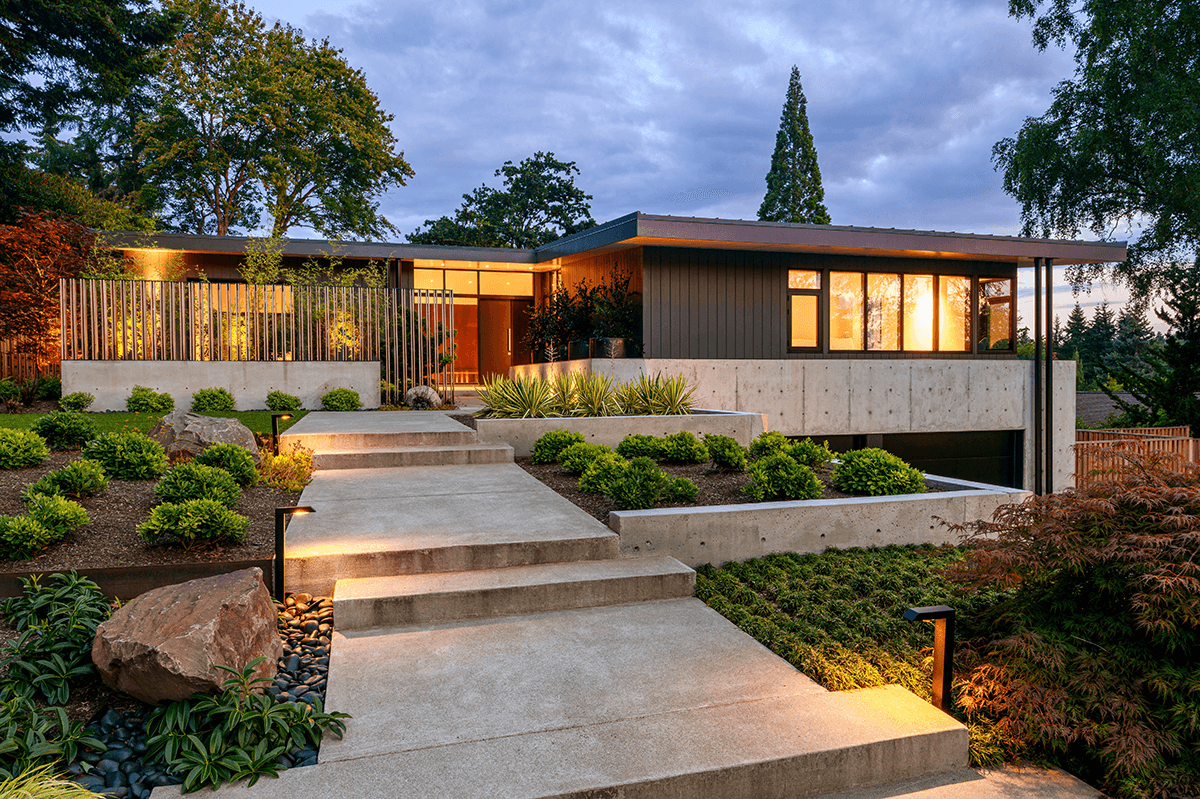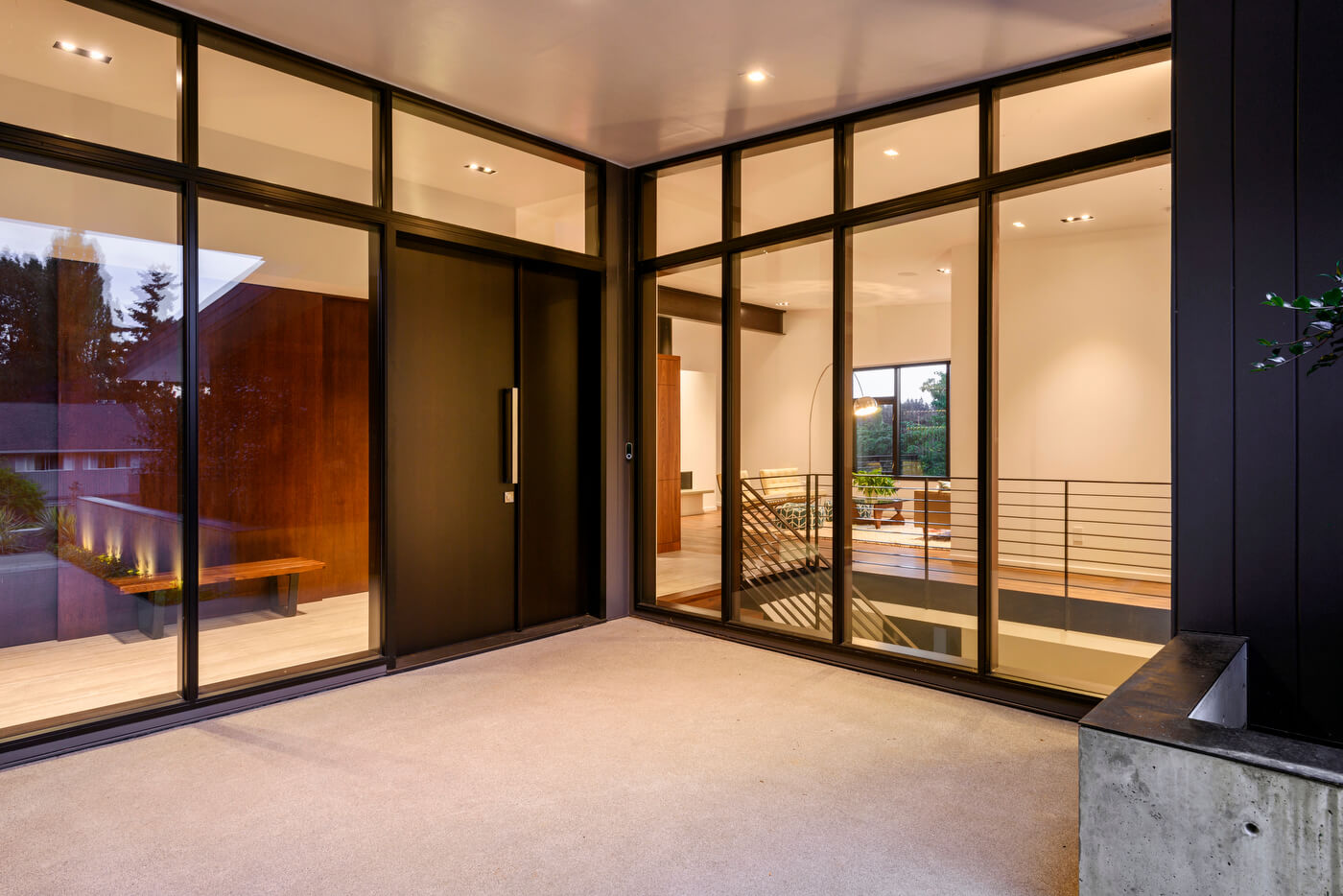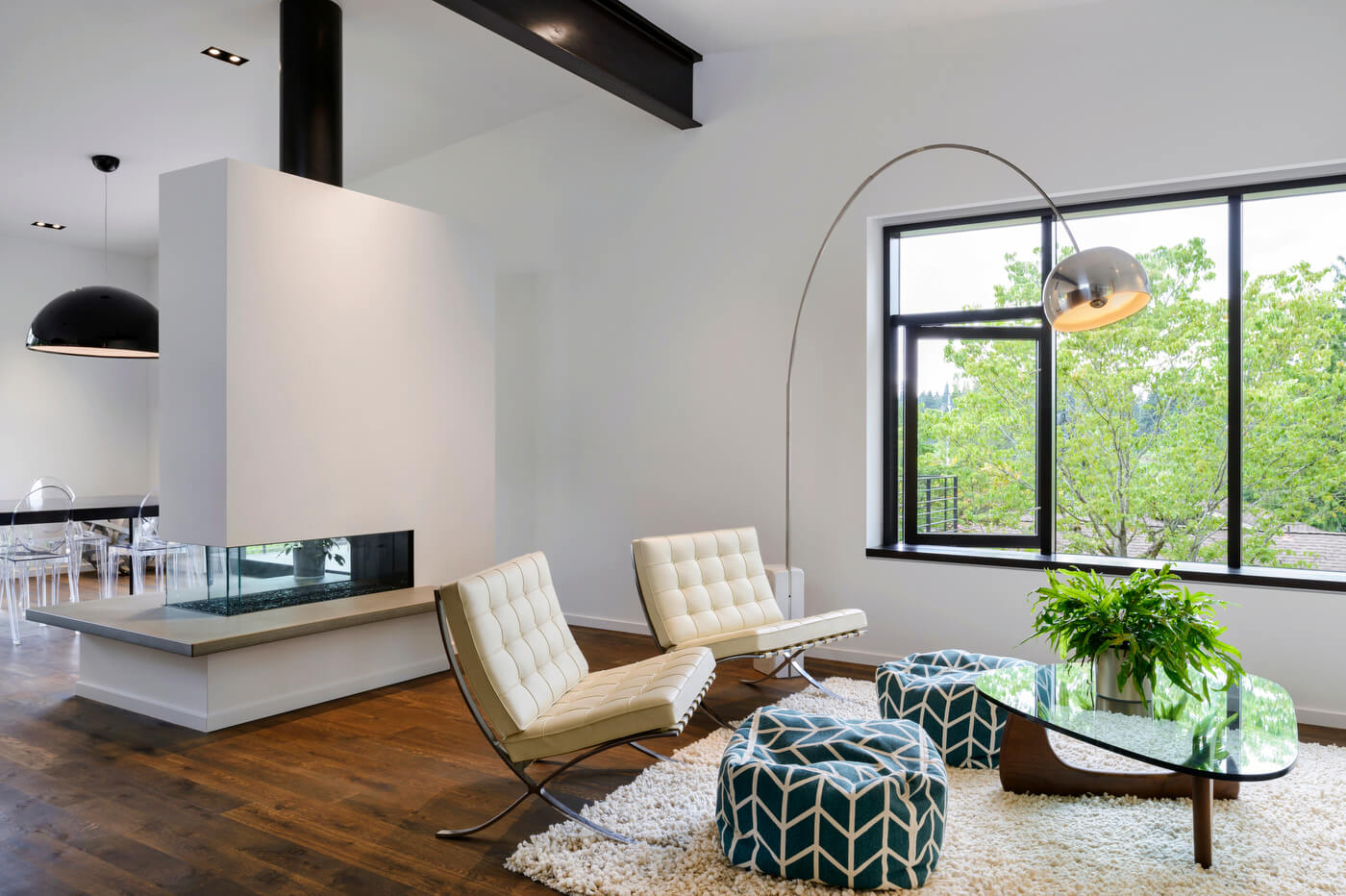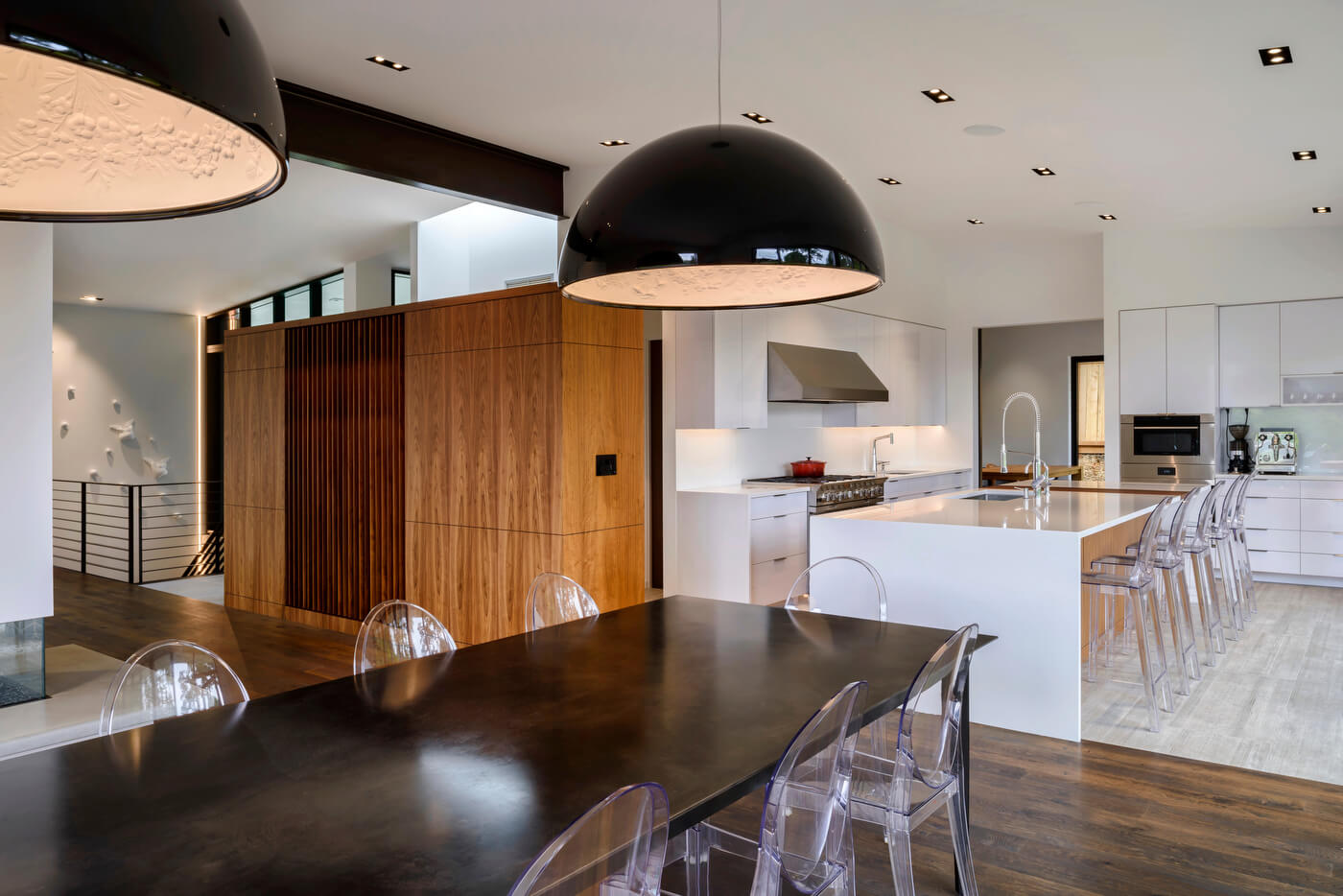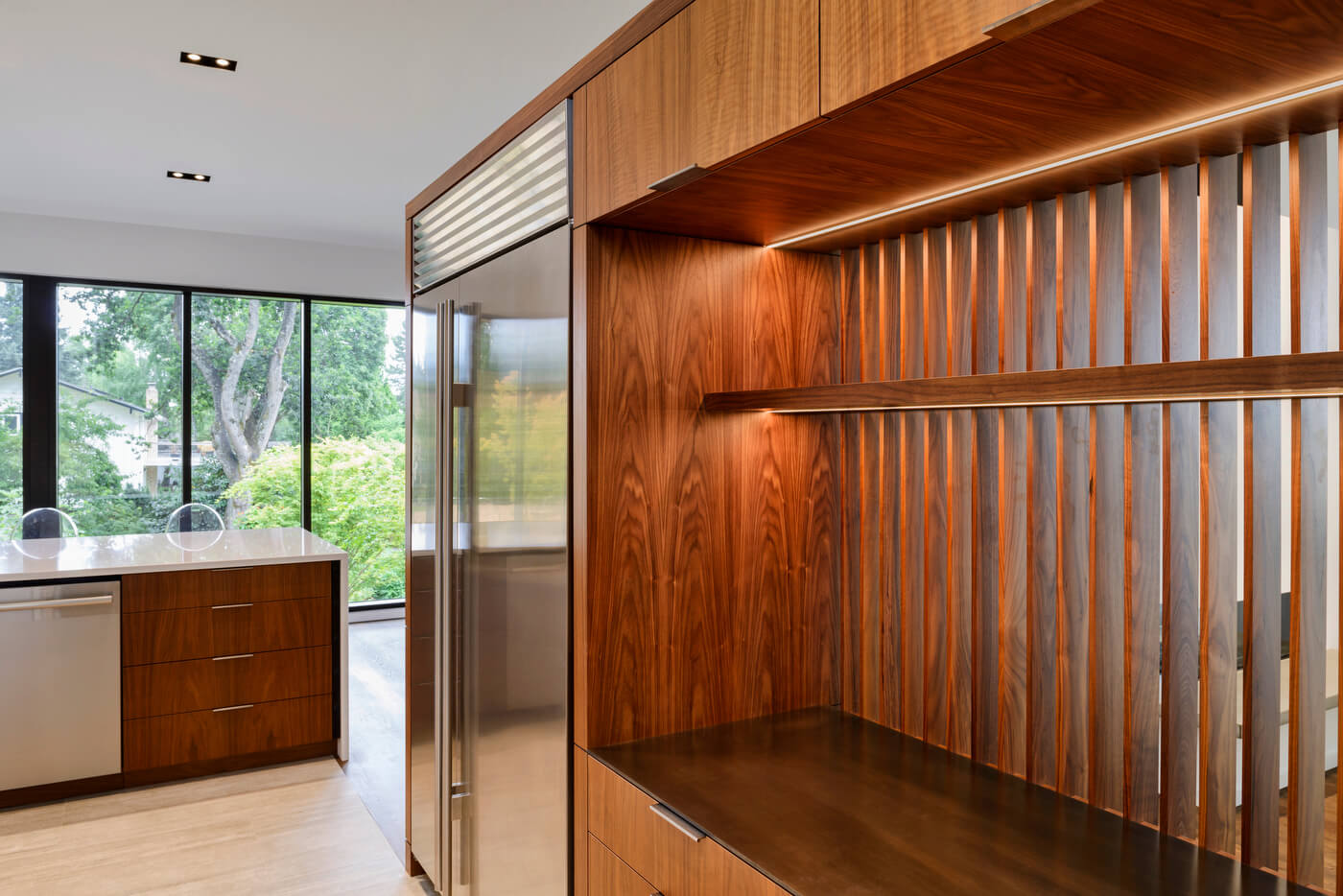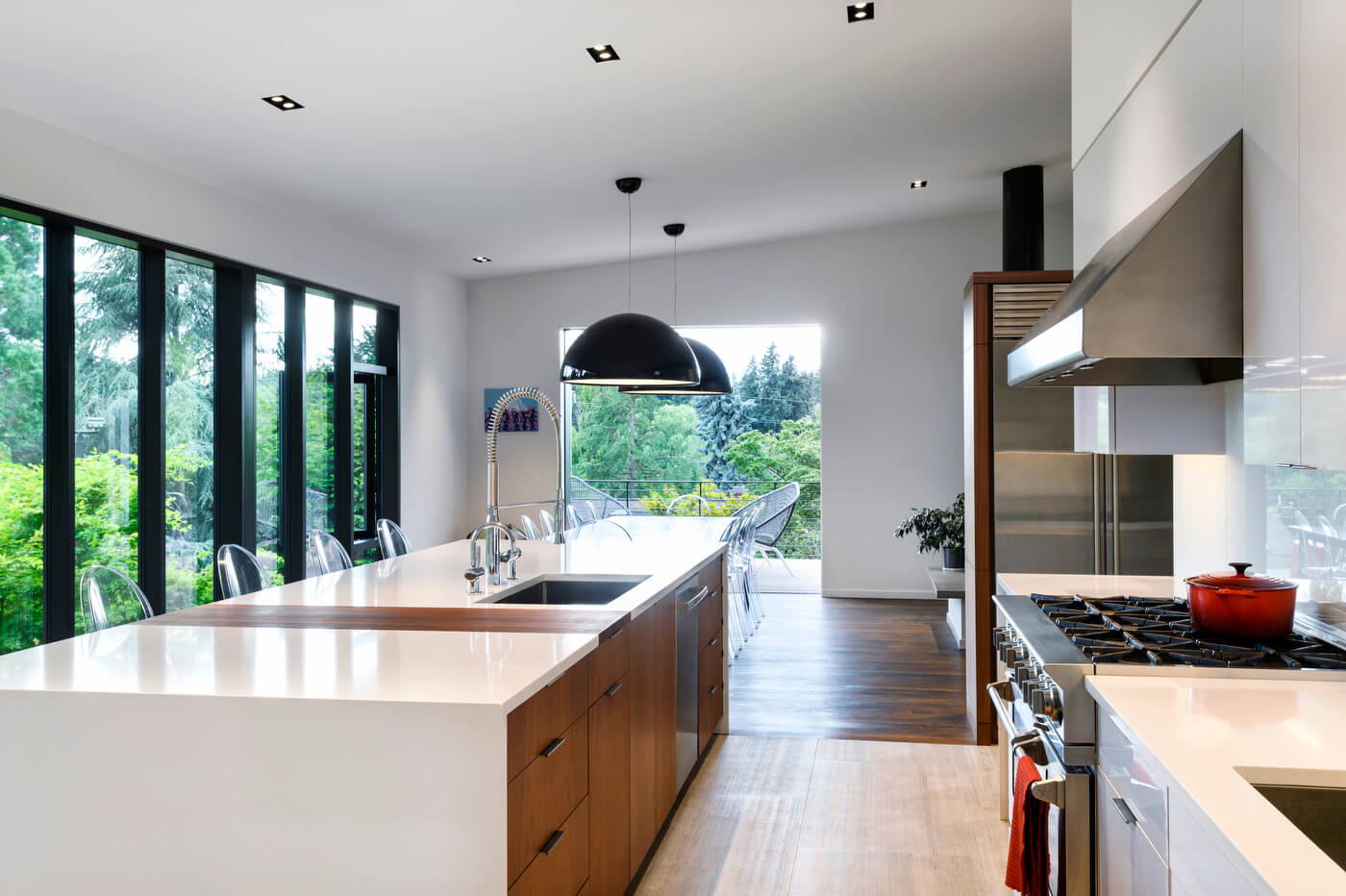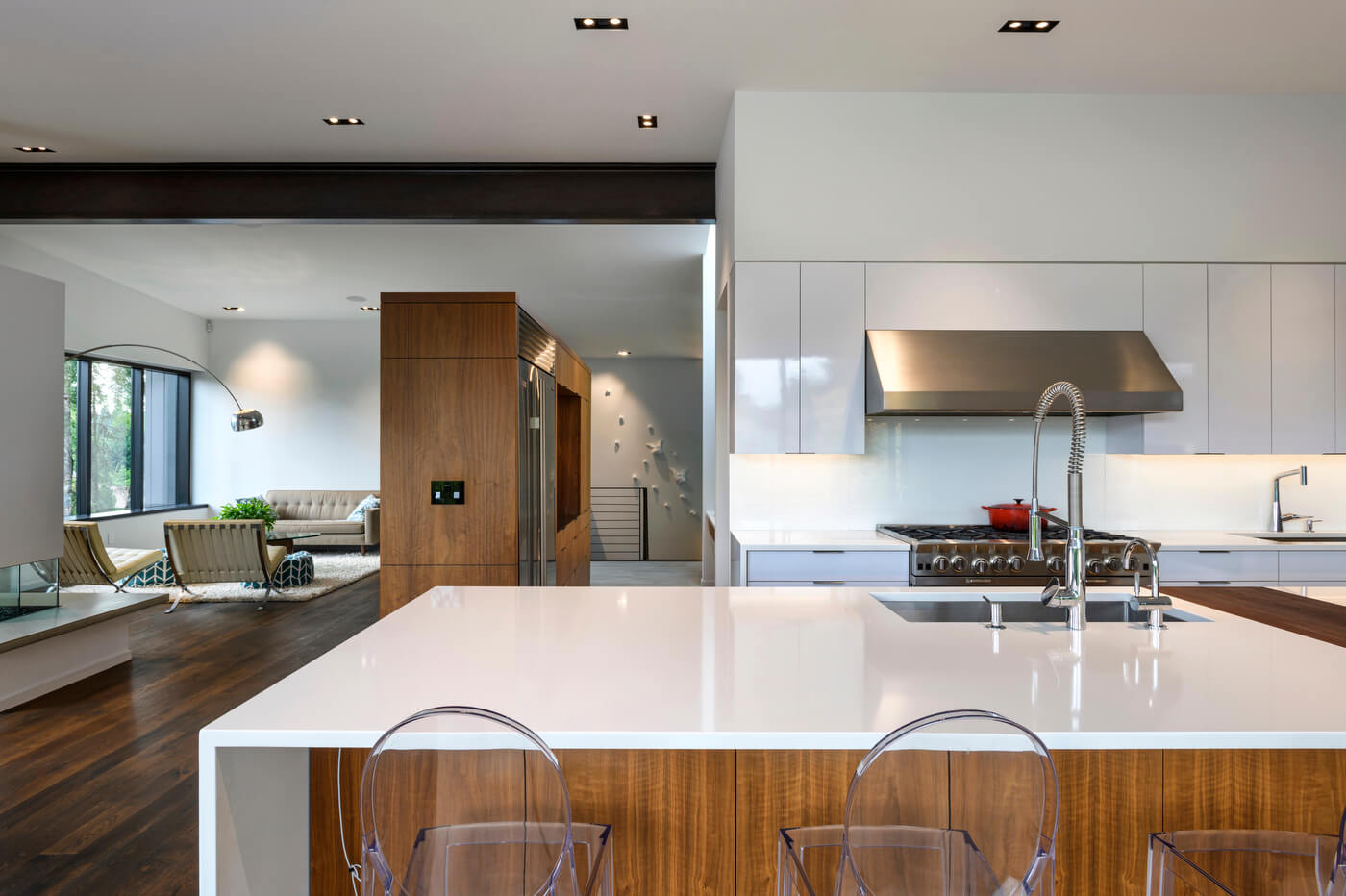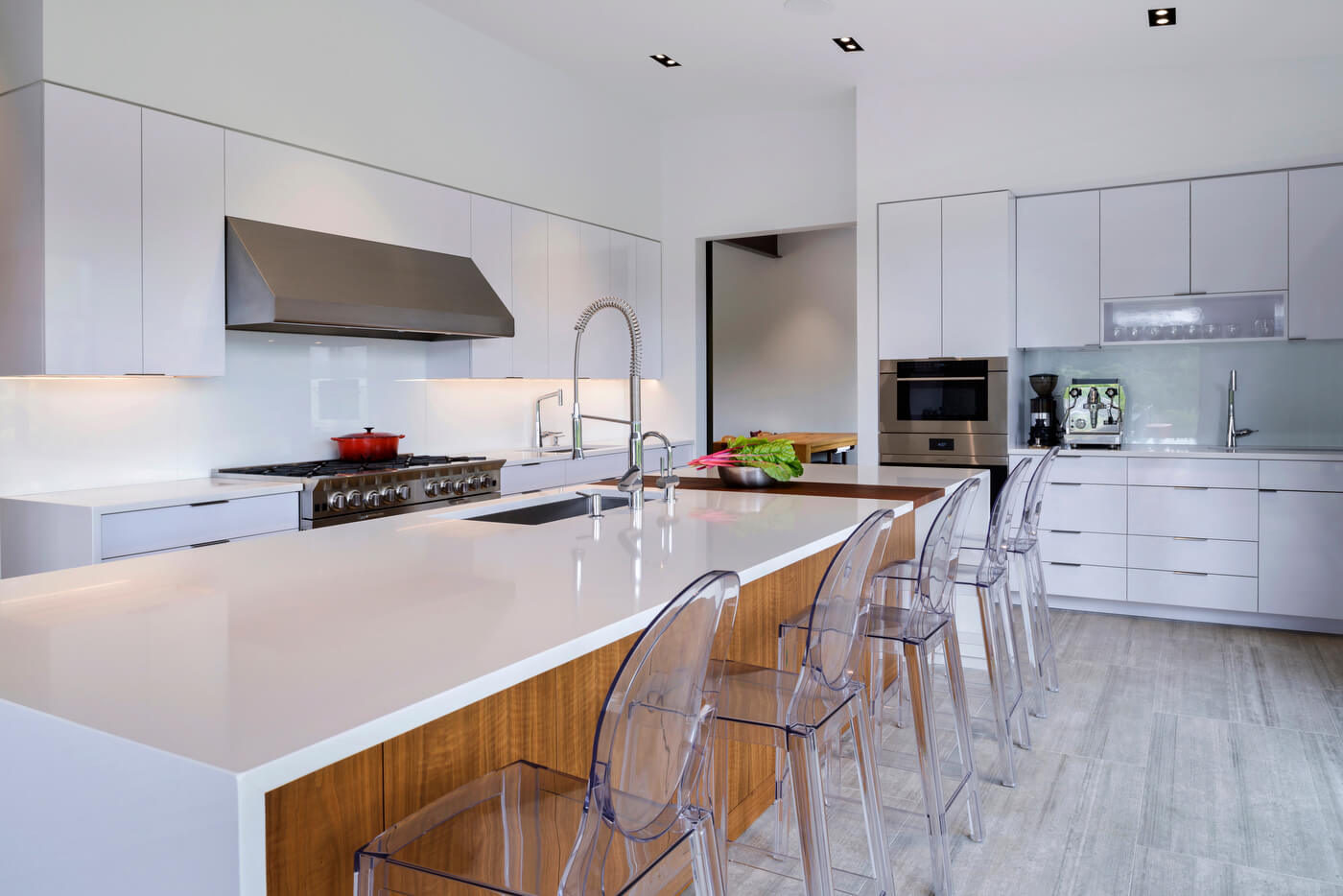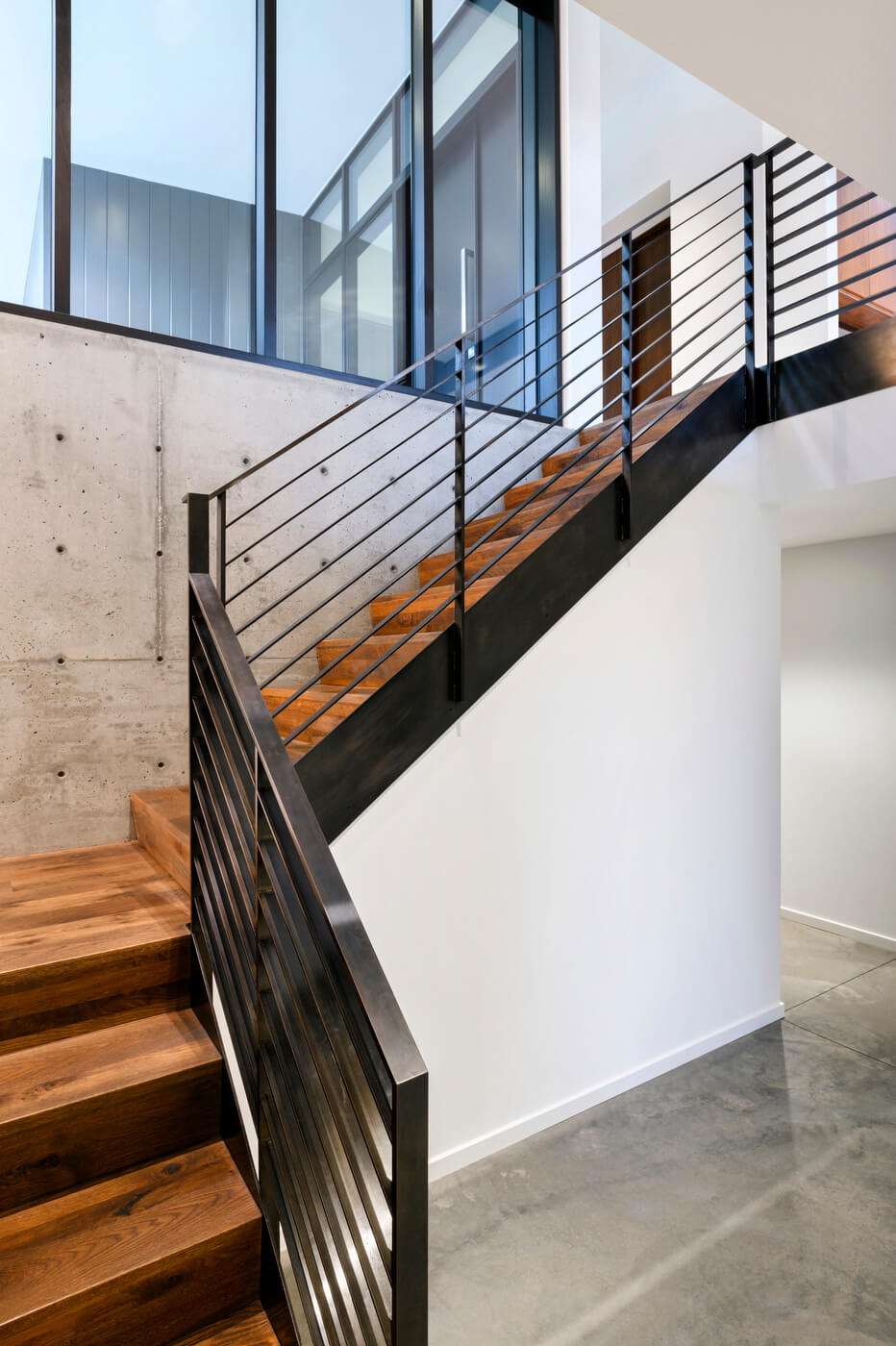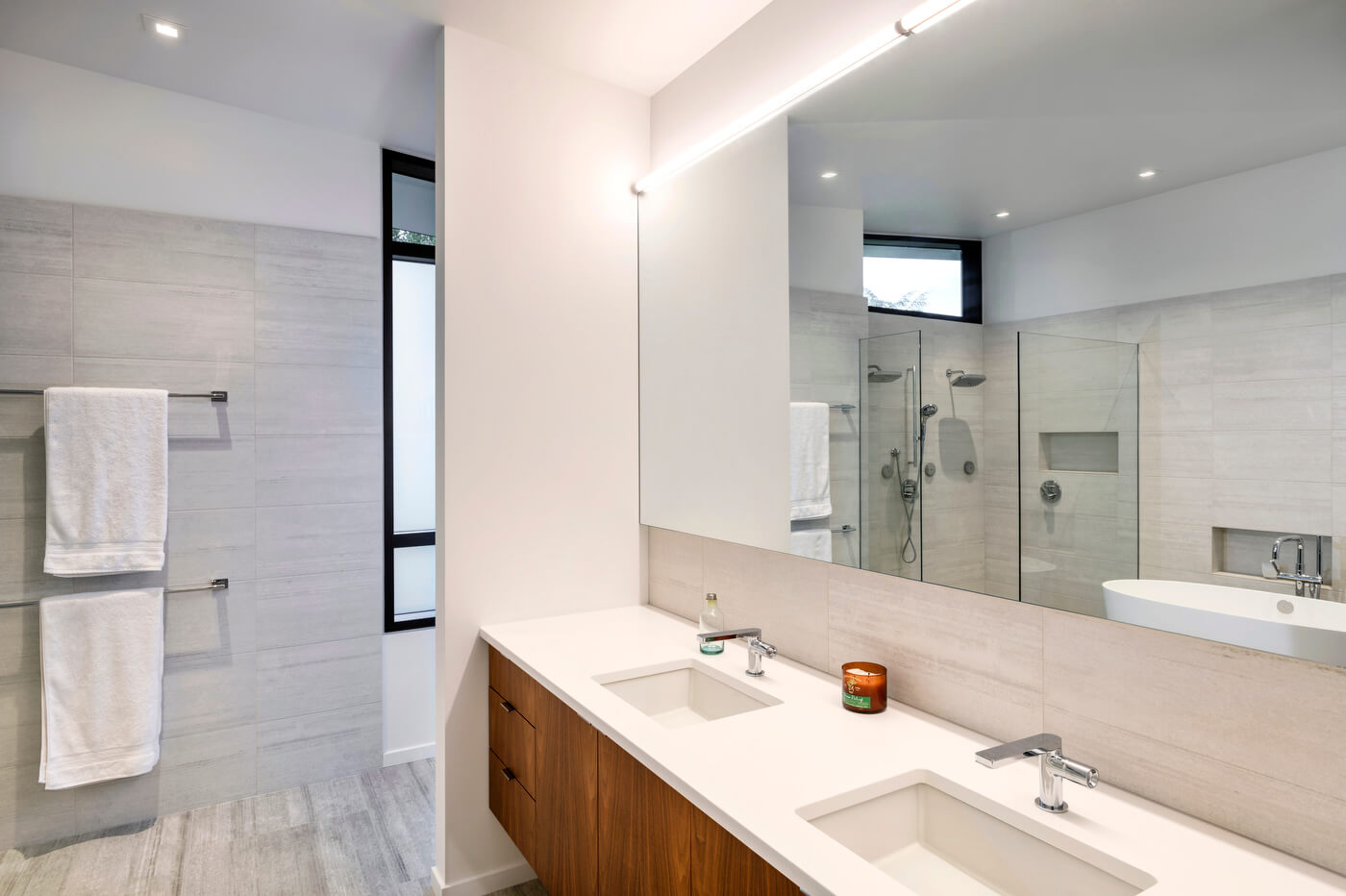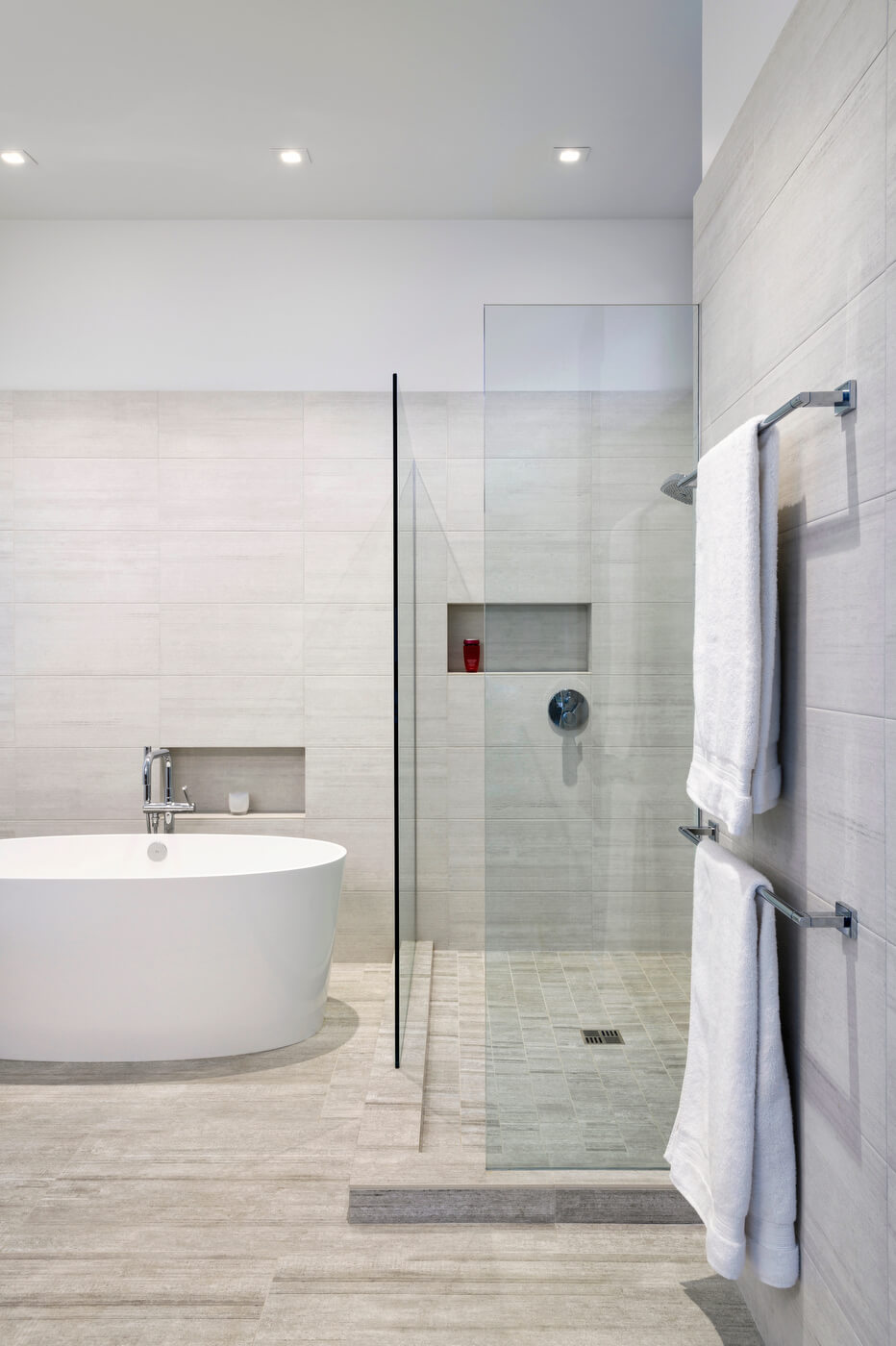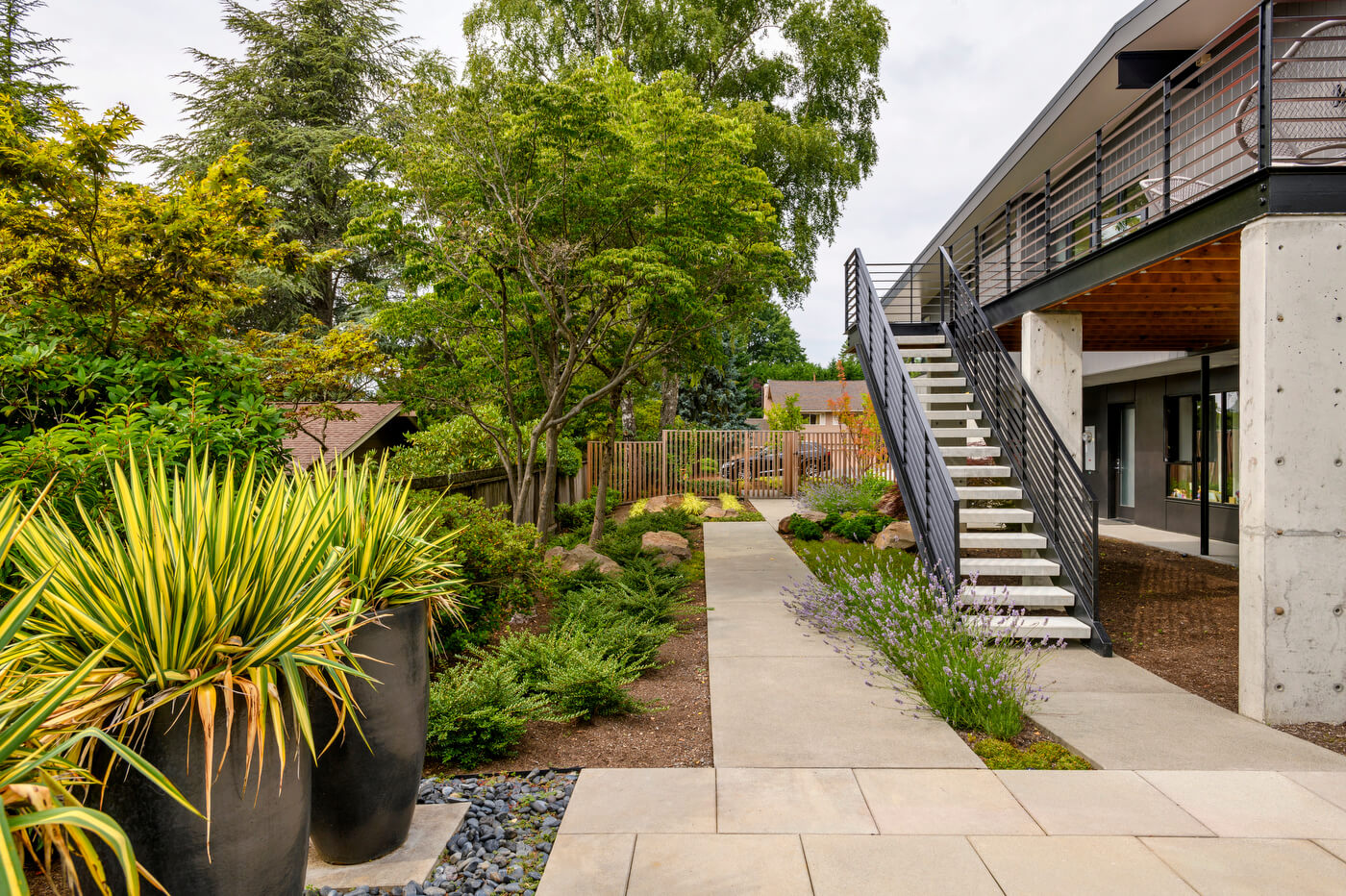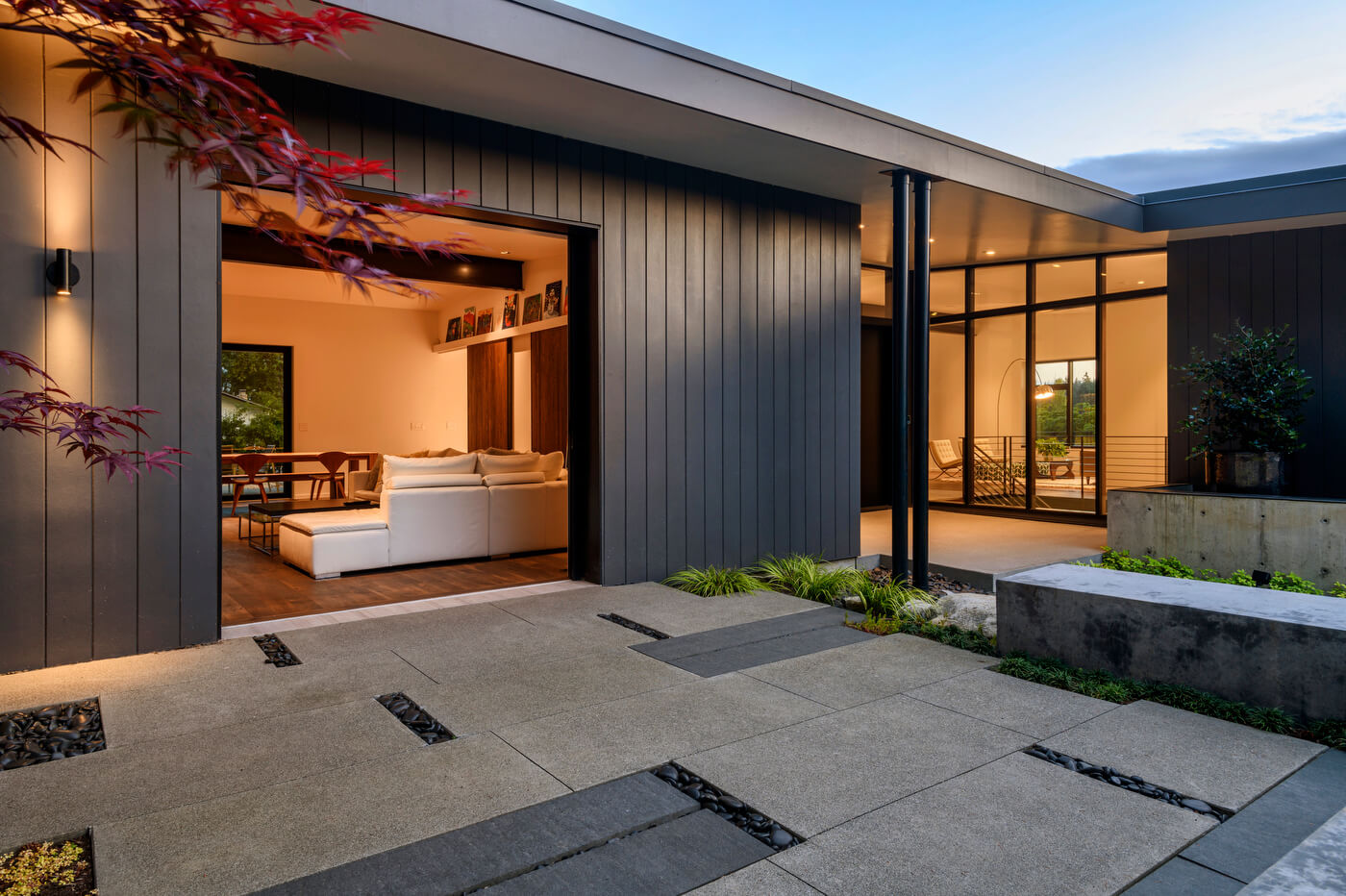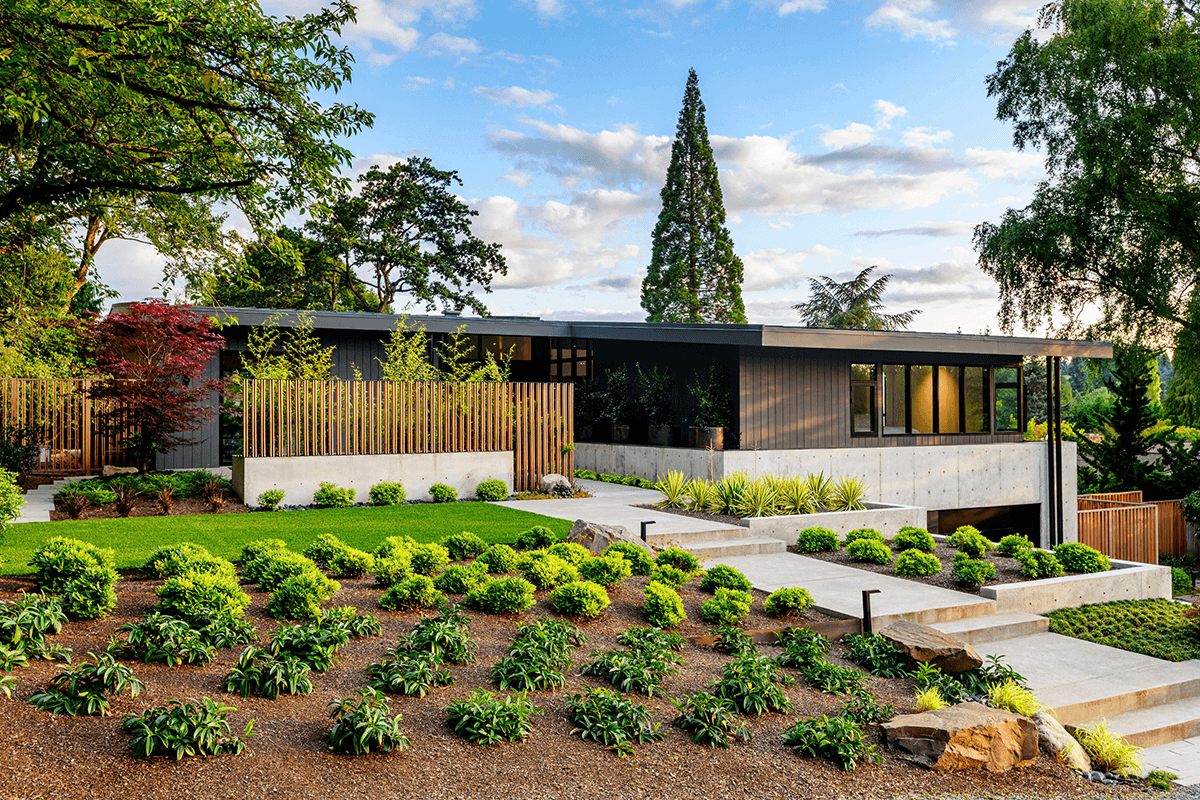Clyde Hill
Clyde Hill
The once modest Clyde Hill rambler, built in 1966, is now all grown up, modern but not trendy, elegant and seated comfortably into the earth on which it stands. The makeover was a true partnership of architect, contractor and landscape design, a blend of efforts easy to see in this photograph. The vertical siding is from James Hardie Company, and the material is repeated in the metal roof’s trim in the same deep gray.
Make it light and make it bright (and airy) was the request from the homeowners, who had lived here for many years before reaching out to architect Lane Williams and contractor Stu Feldt of W.S. Feldt General Contractor. Indeed it is. Even the fireplace, separates the dining room and living room, seems practically not there at all. Black structural enhancements — the heavy steel beam and the fireplace flue, Quantum windows (mahogany stained black) and oak floors with a dark and rustic stain — ground the space without weighing it down.
Certainly, there is elegance in the design of a home, but the quality comes from precision construction — seen here in the kitchen’s Black Walnut cabinetry that serves for storage and hides the refrigerator from view. Vertical slats provide separation while keeping rooms connected and bringing light to every corner. The design of these clean and exacting cabinets is a clear example that simple isn’t easy. Every 45-degree angle must be perfect, spaces between cabinets and walls exact to maintain the restful and orderly feeling for the contemporary kitchen. Quantum Windows, mahogany stained black, stretch floor to ceiling across the kitchen and dining room, introducing and framing the rich Northwest palette of green in many shades just beyond.
The new spaces flow one into another, yet retain their own definitions. The dark-stained oak floors travel the length of the main living spaces. The wood elements grow lighter in the American Black Walnut island and cabinetry before lifting off in the kitchen with white countertops, cabinets and walls. Philippe Starck’s Ghost Chairs unite the crisp white kitchen and darker, more earth-bound dining room.
The once-modest rambler is now two stories and 4,500 square feet of tranquil and repeating patterns, from the wood fence to the concrete stairs and blackened-steel railings. The new home remains largely within the original footprint. The lower level houses the garage (now hidden from view). The complete and total remake of this home began years earlier when the couple reached out to Martha Shapiro and Clare Ryan of Shapiro Ryan Design to transform the backyard. The duo returned to carry out modern design and easy-indoor-outdoor living in the landscaping, crucial to the overall design.
It is the contractor who turns the architect’s vision into reality and makes the beautiful into art. The quality construction of this home was particularly important, a design that relies heavily on pattern and the blending of materials. Precision construction can be seen throughout the home, even in this simple shot of the new stairway to the lower-level bedrooms, exercise room, wine storage and office.
The master bathroom is crisp-white clean and bright with big windows that lure in daylight without compromising privacy. The cabinets are American Black Walnut. Used here, they are the room’s grounding, earthly element. Glass walls contain the master shower spatially but not visually, making the room as open and extravagant as it can possibly be.
Shapiro Ryan designed a wide concrete walkway that steps gently through the terraced and contemporary landscape. The home’s concrete wrap-around balcony welcomes the walkway (and visitors) where the landscape ends and home begins. The vertical wood-and-steel fencing offers privacy and light for the new master suite behind it.
A large sliding door from Weiland slides completely away, expanding the spaces on either side, in the courtyard on the exterior and in the family room beyond. Large overhangs soften and make graceful transitions from outdoor to indoor.
Walls of windows welcome visitors to the front door. The ethereal feeling of the interiors begins here, at the main entry. But while the interior appears to be visible for all to see, this tucked-away entry is actually mostly private. The large and serious steel front doors let all who come here know that this family is nurtured and protected.
Timeless design requires construction built to last, to weather wear and tear and to grow older with grace and elegance. The photograph taken in the evening, shows perfectly how careful and considered contemporary design can play nice with warmth and comfort. In fact, these elements do not conflict at all. Instead, they elevate and enhance each other.


